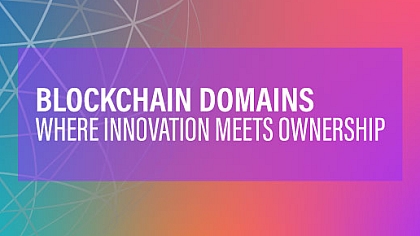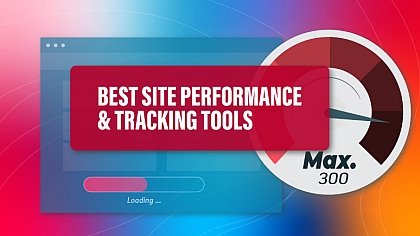
Ecommerce Trends: Online Shopping Insights and Innovations
The world of e-commerce continues to evolve. It’s the retailers who understand how the industry is changing, and adapt to those changes, that will continue to see success. Here are 10 continuing and emerging e-commerce trends, and how retailers can innovate for the future:
1. Personalization Continues
The era of one-size-fits-all marketing is long gone. Consumers have become accustomed to personalized advertising and product suggestions, and this trend will only continue to develop as retailers process more data. Advanced data analytics and AI technologies are enabling online retailers to offer even more personalized shopping experiences.
Personalization affords opportunities for businesses large and small. Large companies will have the resources to process data in detailed and comprehensive ways, tailoring searches and suggestions to a high degree. Small businesses can leverage data to develop highly specialized products, and they can use targeted advertising to advertise their products.
2. Social Media Commerce
Social media platforms have evolved into powerful sales channels. Conversion rates have always been higher when steps are removed from the purchase process. Social media removes one of the biggest steps- customers don’t need to visit a retailer’s website now that they can purchase directly in the app.
Paid social media advertising will only grow as these sales channels do. It’ll also remain ever-important to engage customers, and viral content will result in many more potential sales. Retailers don’t need big budgets to go viral, so long as they have creativity.
3. Influencer Marketing
Part and parcel with social media commerce, influencer marketing will also continue to grow. Major influencers will command top-dollar, and be more than what many smaller retailers can afford.

Small e-commerce businesses might find success with influencers who are authorities within a particular niche. Niche influencers won’t charge as much for mentions, posts and endorsements- Their fans will likely be target customers and trust them.
4. Shopping Apps
With smartphones becoming an integral part of our lives, mobile commerce has seen exponential growth.
Specifically, shopping apps offer convenience and speed when consumers are specifically looking to buy things. Customers don’t have to sift through non-product content, which is much of what they see on social media apps, to find products they might want.
Retailers should become well-versed in how to advertise on shopping apps. Many businesses will likely find themselves listing products on several apps, just as they already do on multiple websites.
5. Augmented Reality and Virtual Reality
Augmented reality (AR) and virtual reality (VR) technologies are bridging the gap between online and in-store shopping experiences. AR allows customers to visualize products in their environment before making a purchase, while VR offers immersive experiences that can replicate or surpass the physical retail experience.
These technologies are particularly effective in categories like furniture, home decor, and fashion, where visualization plays a crucial role in the purchasing decision.
AR and VR have both been slowly percolating, and they won’t be a mainstay for all retailers yet. Headsets aren’t yet affordable for all consumers, and most don’t offer the same audio experience as a high-quality headset. Expect them both to continue to grow, however, and they’ll one day be commonplace in e-commerce.
6. Artificial Intelligence and Machine Learning
On the back side, artificial intelligence (AI) and machine learning (ML) are helping businesses process data in quantities and ways they previously haven’t been able to.
OpenAI caught the public imagination with its conversation-focused ChatGPT. Lesser known -- but not less powerful -- AI programs are being developed for back-end e-commerce. When paired with ML that’s already developed, this will be a combination that’s more powerful than anything previously used.
Those conversation-focused AI programs are also letting businesses use chatbots and virtual assistants in new ways. Chatbots can cut down on customer service labour, and they let even small businesses offer some customer service 24/7. Savings and better service can lead to more sales.
7. Voice Commerce
The rise of voice-activated devices has opened up a new mode of e-commerce: voice commerce. Consumers can now search for products, place orders, and control their shopping experience using voice commands. For example, a simple voice command of “find good pet meds” could yield results like these medications for dogs and cats.
Voice commerce is still relatively new, but customers are starting to use it for routine purchases. There are few other ways to shop for groceries more conveniently. The busy consumer can still get their errands done.
8. Dynamic Pricing and AI-driven Analytics
Dynamic pricing strategies, powered by AI-driven analytics, enable businesses to adjust their pricing in real time based on market demand, competition, and consumer behaviour. This flexibility maximizes profits and ensures competitiveness, while also meeting consumer expectations for deals and discounts.
Consumers might initially dislike dynamic pricing, and it could create a backlash on businesses that try to implement it too quickly. Eventually, however, this could be a common practice.
9. Sustainable and Ethical Shopping
Economic changes are making consumers more price-sensitive, but awareness and concern about environmental and ethical issues aren’t completely going away. Shoppers are still looking for brands that align with their values, favouring products that are eco-friendly, ethically sourced, and sustainably packaged.
Businesses that can find efficient and inexpensive ways to uphold these values can differentiate themselves while remaining competitively priced. Retailers should pursue these values whenever possible but also might want to look for products that uphold these values too. The brands that retailers carry can be even more important than the retailer’s actual processes.
10. Omnichannel Retailing
Omnichannel retailing provides a seamless shopping experience across multiple channels—online, mobile, and in-store. This approach ensures consistency in customer experience, regardless of how or where the customer chooses to shop. It’ll only become more and more important, as consumers shop on websites, social media apps, shopping apps, and eventually by VR and voice.
Succeed as E-commerce Evolves
The future of e-commerce is being shaped by more diverse sales channels, technology that can process data more efficiently, and continued values. Understand these, and you’ll understand how your business can succeed as an e-commerce retailer both this year and the ones that follow.














